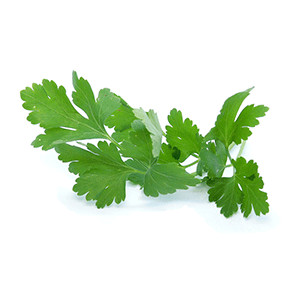Cruiser

Variety
Cruiser
Approved Data
created by steffen a. at 28.12.2023
Features
Color
carrot like
Location
Gewächshaus
Freiland
Growth habit
niedrig
Resistenzen
robust
Fruit shape
Blätter
Geschmack
bitter
Season Overview
Sowing
Harvest
J
F
M
A
M
J
J
A
S
O
N
D
Description
Coriander Cruiser is a new British variety that we recommend to those of you who grow your herbs in pots and containers. Cruiser has large, glossy green leaves and good basal branching. The plants are vigorous, but at the same time very slow to sprout, which allows for a long harvest period.
Non hybrid
Not frost resistant
Growing tips
Coriander does not transplant well and shoots up very quickly if the roots are disturbed. For this reason, it is always best to sow coriander seeds directly into pots or into the soil of their final growing location during the spring and summer months. The seeds should be carefully sown in drills about 5 cm apart if grown for leaf production and up to 20 cm apart if grown for seed production. Seeds can be sown directly into pots or containers that are at least 15 cm deep to accommodate the long taproots. Use high quality compost to ensure healthy plants. Coriander does equally well in sunny and semi-shady locations, but always ensure that the plants are watered, otherwise they will quickly turn to seed. Give a liquid fertilizer every 2-3 weeks. The planting bed should be well prepared, contain plenty of organic material and the soil should be well drained. A heavy clay soil is not particularly suitable for coriander and can tempt the plants to go to seed early. Water the plants regularly and remove weeds from the beds as soon as they appear. If the soil is well prepared, applying a liquid feed is not really necessary. Simply pick or cut the leaves from the mother plant and use them as needed. The leaves will keep for a few days in the fridge, but you can also freeze them. The best way to freeze them is to collect the leaves and stems and place them directly in a plastic bag before putting them in the freezer. Frozen leaves are not suitable for salads or garnishes as they are less firm after thawing. When collecting seeds, cut off the old flower heads and place in paper bags. Store in a dry place for 3 weeks and then shake the heads to remove the seeds.
Details
Light requirement
Semi-shaded
Water requirement
Moist
Soil
Medium (loamy)
Nutrient requirement
Low
Plant distance
5 cm
Row spacing
30 cm
Seeding depth
1.5 cm
Companion Plants
Anise
Basil
Bean (Runner bean)
Beetroot
Broccoli
Brussels sprouts
Cabbage (Cabbage)
Cabbage (Savoy cabbage)
Cauliflower
Chamomile
Chili
Collard greens (Kale)
Collard greens (Tuscan kale / Dinosaur kale / Palm tree kale)
Common marigold
Cucumber / Gherkin
Ginger
Horseradish
Kohlrabi / German turnip / Turnip cabbage
Lemon verbena / Lemon beebrush
Lettuce (Lettuce)
Marjoram
Melissa
Mint
Mustard
Napa cabbage / Chinese cabbage
Pak Choi
Pea
Pepper / Paprika
Potato
Rosemary
Sage
Strawberry
Sunflower
Tarragon
Thyme
Antagonistic Plants
Diseases
Angular leaf spot of cucumber
Black spot of roses
Red spot disease
Downy mildew
Powdery mildews
Pests
No pests